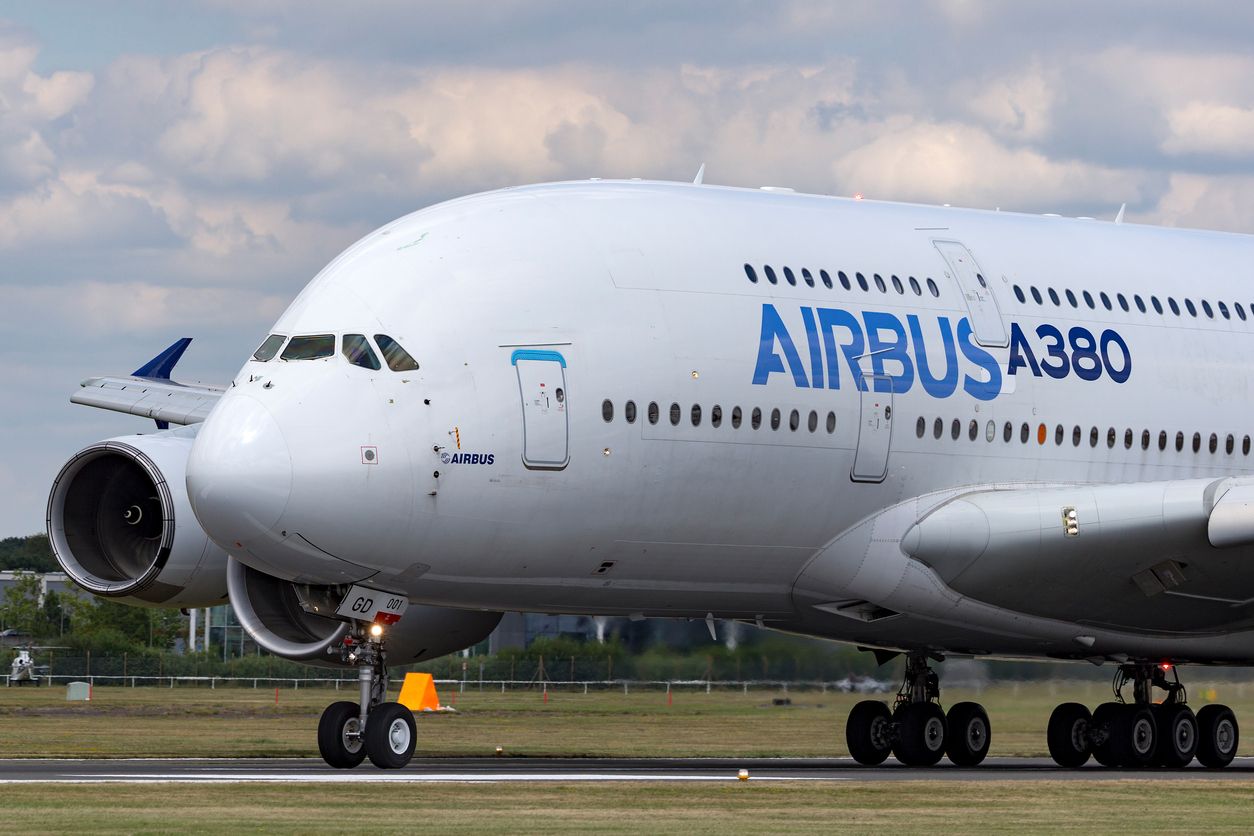
Congestion at air hubs and the Great Financial Crisis played a major part in the aircraft’s demise, but did Airbus contribute to its own failure?
The Airbus A380, with the capacity to carry a maximum of 853 passengers, was supposed to revolutionise commercial air travel. But after spending US$25 billion – more than double the forecast – to develop the airplane, CEO Tom Enders announced in 2019 that Airbus will stop delivering A380s by 2021. All in all, Airbus delivered less than a quarter of the 1,200 A380s it had expected.
Much of the A380’s demise stems from the 2008 Great Financial Crisis (GFC), as airlines moved away from the hub-and-spoke model that was essential for Airbus’s ambitions. Very large aircrafts supported the hub-and-spoke configuration by facilitating more seats per plane, higher fuel efficiency and lesser cost per seat for airlines using the model. The hub-and-spoke model also supported airport stopovers, and airport shopping by travellers, thereby creating a wine and cheese correlation of airlines and airports.
Many large cities had established themselves as mega airport hubs, relying on the hub-and-spoke to connect flights with other cities across the globe. London’s Heathrow Airport and Singapore’s Changi Airport were examples of such mega hubs that had motivated airlines like British Airways, Emirates and SIA to rely on the hub-and-spoke model to reconfigure traditional air travel.
Following the GFC, air travel started to revert to the point-to-point mode, as airlines realised that it was more economical to maintain and fly medium-sized airplanes given that running very large aircrafts profitably required a full aircraft for every flight. Post-GFC, many new budget airlines started to emerge and became huge hits utilising medium- to small-sized aircrafts and the point-to-point mode to offer travellers a seat-only air travel experience for much cheaper ticket prices.
The A380’s demise exemplifies the volatility of the commercial aircraft industry, and its frequent changing needs over time. But were Airbus simply unlucky? Or was it bad strategy? How could Airbus continue to maintain its leadership position in the market?
Airbus v Boeing: Different approaches, different results
Strategically, Airbus had started its journey building wide bodies, while competitor Boeing had mainly focused on building narrow bodies. Airbus’s first major aircraft was a wide-body model in 1972, the A300, which received only 81 orders in seven years. The follow-up model, the A320, was a narrow body plane which suited the point-to-point routes that were popular in the 1980s; it received 400 orders even before its first flight.
Large airport hubs had started to emerge globally by the late-1970s, motivating airliners to adopt the hub-and-spoke model. Ironically, it was Boeing that reaped the rewards of a large commercial aircraft, the soon-to-be iconic B747.
The B747 brought comfortable air travel at affordable prices to the forefront and saw humongous success as a passenger as well as a cargo aircraft. From 1970 to 1992, the B747 recorded a sale of 950 aircrafts and became the Cash Cow for the company. The B747 was the only aircraft at the time in the very large aircraft category, with more than 400 seats.
Boeing had invested US$1.5 billion in the B747 and saw a growth of 39 percent in orders over the decade (total orders jumped from 935 in 1989 to 1303 in 1999, with an average of 37 planes per year). The aircraft generated an operating profit of US$40 million per plane (on an average selling price of US$150 million per plane). Analysts had estimated that the B747 accounted for 70 percent of Boeing’s operating profit during the 90s.
The decision to launch the A380 was driven by several strategic considerations. Airbus felt that the very large aircraft market had potential, and the B747 was mainly successful because of its monopoly. In a company publication, Jean Roeder, a senior executive at Airbus, noted:
“If Airbus Industries were to become a real global player, the 747 monopoly would have to end. Airbus was making efforts at this time to get 30 percent of the market, and we thought that this just would not be possible in the long term if we did not get a complete set of aircraft in our program.”
Mistakes made?
Boeing estimated the development cost for a new super-jumbo model (from scratch) would be US$20 billion. Contrary to Boeing’s opinion, Airbus put that figure at US$12 billion after adding operating costs. Airbus management bet heavily on airlines maximising existing hub-and-spoke systems, and that high-capacity aircrafts would help accommodate the growing number of passengers and alleviate airport slot congestion. They surmised that new airlines like Emirates would find the suitability of the large planes for hub-and-spoke systems and long-haul routes more attractive.
Meanwhile, Boeing took the opposite view. Boeing’s management had observed the congestion at hub airports and concluded that airlines would demand smaller and faster jetliners that would bypass hubs altogether. The result of was B787 Dreamliner, which was designed for long haul flights, allowing airlines to offer direct flights between any pair of cities without layovers. By 2008, Boeing received orders from more than 50 airlines for 895 Dreamliner’s.
Has the A380 been just a bad strategy? Alternatively, has it been a good strategy gone wrong in execution? What learning lessons has the A380 provided Airbus? How could Airbus stay competitive in the near future despite the demise of its magnificent A380? Would environmentally friendly planes become the new battlefield for the two rivals - Airbus and Boeing?
This is an adapted version of the SMU Case, “The Rise Demise of Airbus A380”. To see the full case, please click on the following link: https://cmp.smu.edu.sg/case/5066.
Follow us on Twitter (@sgsmuperspectiv) or like us on Facebook (https://www.facebook.com/PerspectivesAtSMU)